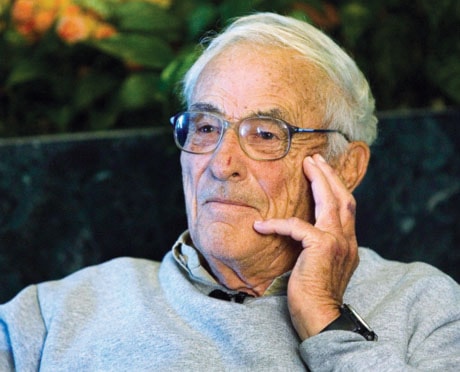HALIFAX — Former colleagues of a Canadian physicist who was recently awarded the Nobel Prize say the Royal Swedish Academy of Sciences has made a big mistake.
Earlier this month, the academy cited Nova Scotia’s Willard Boyle and American George Smith for inventing an image sensor that revolutionized photography. But two of their former co-workers at Bell Labs in New Jersey — Eugene Gordon and Mike Tompsett — say the citation is wrong.
“They wouldn’t know an imaging device if it stared them in the face,” Gordon, 79, said in an interview Monday from his home in New Jersey.
Gordon, who worked at Bell Labs for 26 years, said the patent used to justify the award makes no mention of imaging devices, even though the academy said the invention of the charge-coupled device or CCD in 1969 led to the birth of digital photography “as light could now be captured electronically instead of on film.”
The CCD transforms light into a large number of digitized image points, or pixels, in a split second. Today, the device is still used in digital cameras, camcorders and high-powered telescopes. The stunning deep-space images from the Hubble Space Telescope and the Mars Rovers also came from CCDs.
But Gordon said Boyle and Smith had little to do with the scientific breakthrough, a claim the winners flatly dismiss.
Smith and Boyle’s patent is for something called CCD shift register, which makes no mention of imaging, Gordon said.
“They made a mistake,” Gordon said. “That citation was totally wrong. . . . They had nothing to do with the invention of imaging devices.”
Boyle said he wants to stay out of the controversy.
“I’m totally confident that the Nobel committee made the right decision,” said Boyle, 85, who was born in Amherst, N.S., and now lives in Halifax. “I can clearly remember the day that George (Smith) and I developed the concept for the CCD. It’s pretty firm in my mind.”
Gordon, a physicist from New York with a long list of patents and awards to his name, said the academy should have given the award to another colleague, Mike Tompsett, also of Bell Labs.
Tompsett is the one responsible for designing and building the first two CCD cameras at Bell Labs, and his name is on the patent for those devices.
“He invented how to do it,” said Gordon. “He designed the devices. He built them. He demonstrated on them.”
Gordon said he wrote to the Nobel Prize committee to complain about the oversight, but the committee did nothing.
“A lot of people get prizes and prominence for things they didn’t do,” he said. “Bosses often get credit for things they had nothing to do with.”
Boyle was Gordon’s boss and the head of their laboratory at the time.
As for Boyle, he said he wants to stay out of the controversy.
“I’m totally confident that the Nobel committee made the right decision,” said Boyle, 85, who was born in Amherst, N.S., and now lives in Halifax.
“I can clearly remember the day that George (Smith) and I developed the concept for the CCD. It’s pretty firm in my mind.”
Smith said the allegations don’t stand up to scrutiny.
“I’ve documentation that disproves most of what they are saying and the rest of what they are saying is not at all logical,” Smith told the Halifax Chronicle Herald.
For his part, Tompsett said that Boyle and Smith deserve credit for their original concept, but he insisted they were headed in the wrong direction with the technology.
“They were looking at memory,” he said. “They did not anticipate imaging.”
But the Nobel citation clearly points to imaging as the reason for the award.
“If you take it all literally, the prize should have been given to me,” said Tompsett, who now runs a medical software company in New Jersey. “I think if their name is on it, mine should be, too.”
Tompsett, who also has several patents to his name and accolades for his work on thermal imaging, said the Nobel committee has been wrong before.
“The real error in this case came from the Swedish academy, who did extremely poor research,” he said. “It’s very shallow, what they did.”
Indeed, the Nobel Prize has been dogged by controversy and protest ever since the first awards were handed out in 1901.
One of the more famous flaps involved Guglielmo Marconi’s 1909 physics prize for a successful experiment that involved the transmission of radio waves from Britain to Newfoundland in 1901. In 1943, the U.S. Supreme Court ruled that Marconi’s patent was invalid, recognizing American inventor Nikola Tesla as the real father of radio.
Earlier this month, the US$1.4-million purse for the award was split between Boyle, Smith and a third man, Charles K. Kao, who was cited for a breakthrough involving the transmission of light in fibre optics.
